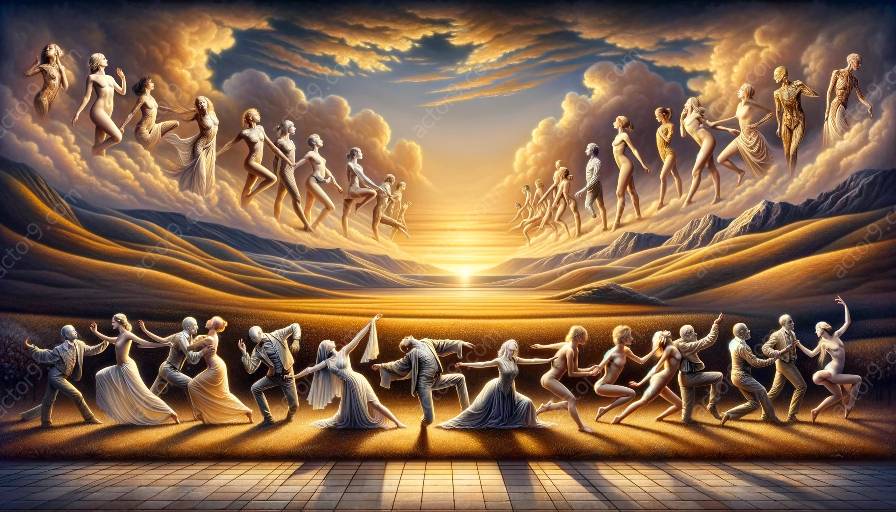The historical evolution of body language in performing arts has been a fundamental aspect of expression and communication on stage. It encompasses a wide range of movements, gestures, and postures that convey meaning and emotion. Throughout history, body language has played a significant role in the portrayal of characters, storytelling, and the overall impact of performances. This exploration will delve into the intricate relationship between body language, body language analysis, and physical theatre, shedding light on its evolution and influence in the world of performing arts.
Origins of Body Language in Performing Arts
Body language has been an integral part of performing arts from ancient times. In early civilizations, such as ancient Greece and Rome, theatrical productions relied heavily on physical gestures and movements to convey emotions and convey the narrative. Actors used their bodies to portray different characters and communicate with the audience, as verbal communication was often limited.
One of the earliest forms of body language in performing arts was the use of masks in Greek theatre. These masks, with exaggerated expressions and features, allowed actors to convey emotions and depict various characters with distinct physical characteristics. The movements of the body, combined with the use of masks, created a powerful form of nonverbal communication that captivated audiences.
Evolution of Body Language in Performing Arts
As performing arts evolved over the centuries, body language continued to play a pivotal role in the portrayal of characters and the communication of narratives. The development of different theatrical styles and performance techniques further enriched the use of body language on stage. In various cultures around the world, traditional forms of dance and theatre integrated intricate body movements and gestures to convey cultural stories and traditions.
During the Renaissance period, the study of human anatomy and the understanding of gestures and body language became significant influences on performing arts. Artists and performers sought to depict the human form and its expressions with greater realism and emotional depth. This led to a heightened awareness of body language in theatrical performances, emphasizing the importance of conveying authenticity and emotion through physical movements.
Body Language Analysis and Performance
Body language analysis has become an essential tool for performers and artists in understanding the nuances of nonverbal communication. The study of body language in the context of performing arts involves analyzing the movements, gestures, and postures of actors and dancers to interpret their emotional expressions and intentions. Through body language analysis, performers can enhance their portrayals of characters and convey subtle nuances that add depth and authenticity to their performances.
Physical theatre, a form of performance that emphasizes the use of the body as a primary means of expression, also relies heavily on body language to convey narratives and emotions. In physical theatre, performers utilize their bodies as a versatile tool for storytelling, using a combination of gestures, movements, and expressions to create a compelling visual and emotional experience for the audience. The integration of body language analysis in physical theatre further enhances the performers' ability to communicate effectively without relying solely on verbal dialogue.
Modern Interpretations of Body Language in Performing Arts
In contemporary performing arts, the exploration of body language has expanded to encompass diverse genres and interdisciplinary forms of expression. From contemporary dance to experimental theatre, artists continue to push the boundaries of body language as a medium for storytelling and emotional communication. The incorporation of technology and multimedia elements has also transformed the way body language is integrated into performances, providing new avenues for creative expression and interaction with audiences.
Furthermore, the recognition of body language as a universal form of communication has led to its integration into various aspects of performing arts education and training. Actors, dancers, and performers undergo extensive training in body language and movement to develop a heightened sense of physical expression and communication, allowing them to effectively convey complex emotions and narratives on stage.
Conclusion
The historical evolution of body language in performing arts reflects the intrinsic connection between physical expression, emotional communication, and storytelling. From its origins in ancient civilizations to its modern interpretations, body language has remained a vital component of performances, enriching the audience's experience and enabling performers to captivate, inspire, and connect with their audiences on a deeper level. As the interplay between body language, body language analysis, and physical theatre continues to evolve, it reinforces the enduring significance of nonverbal communication in the realm of performing arts.




































